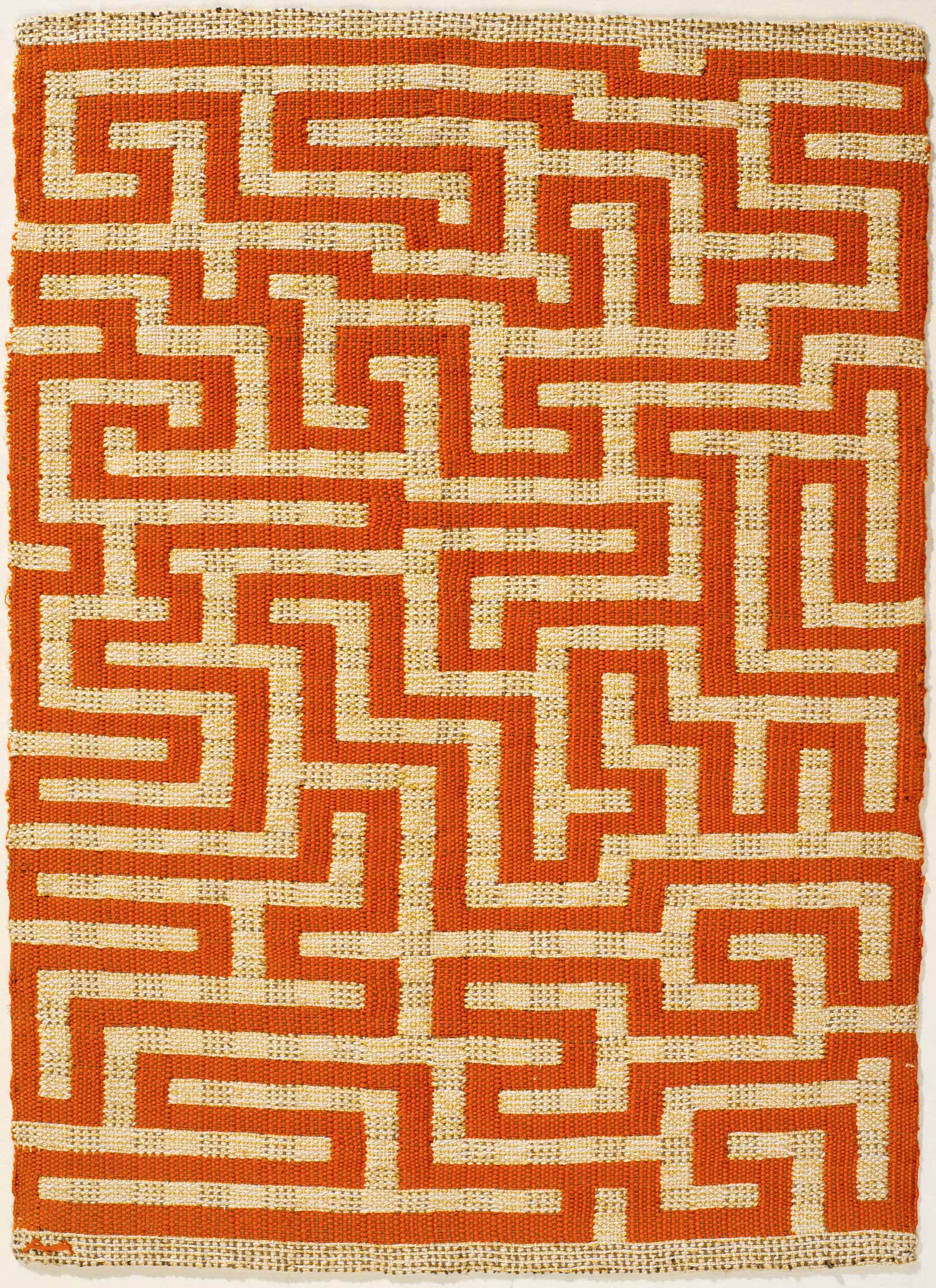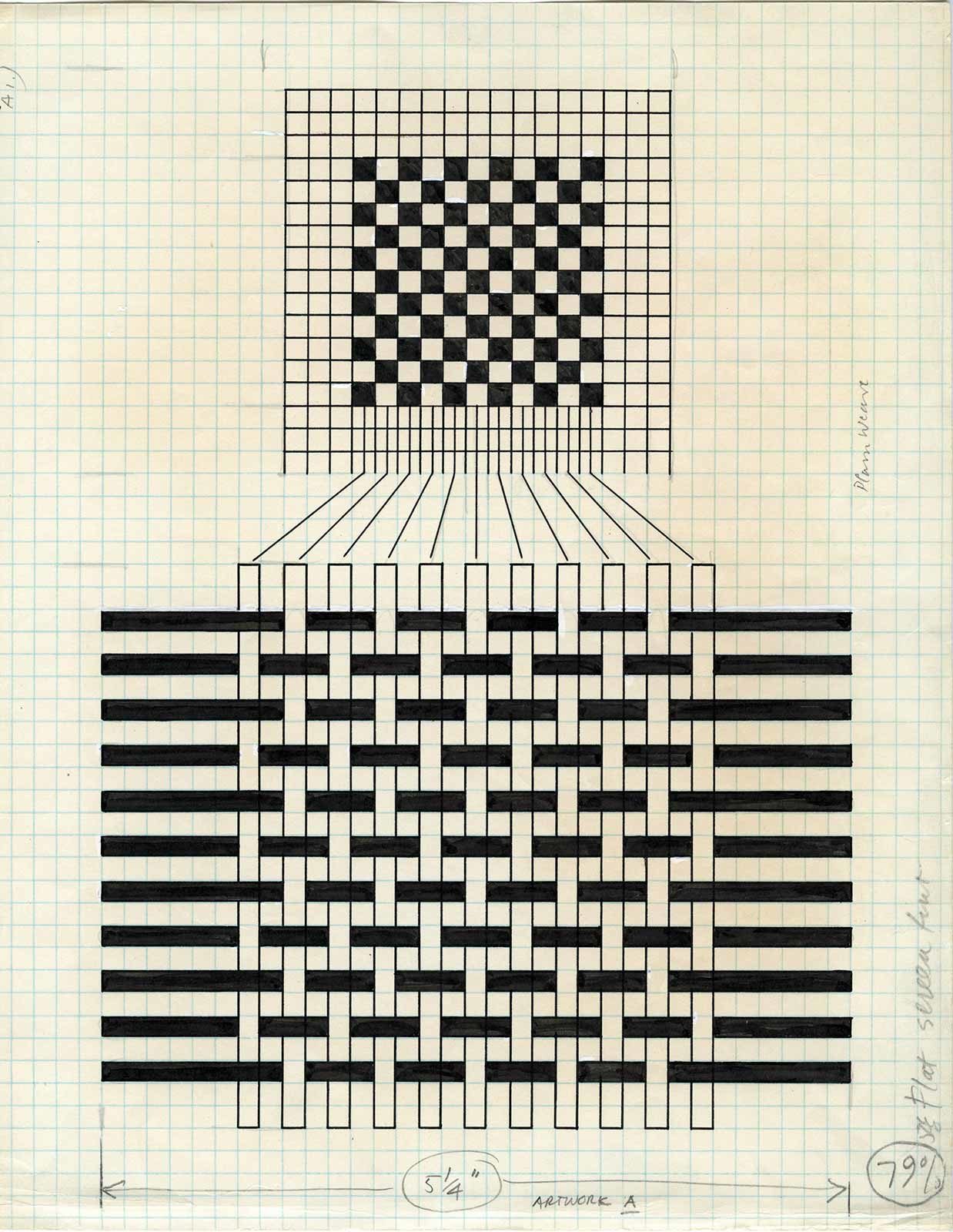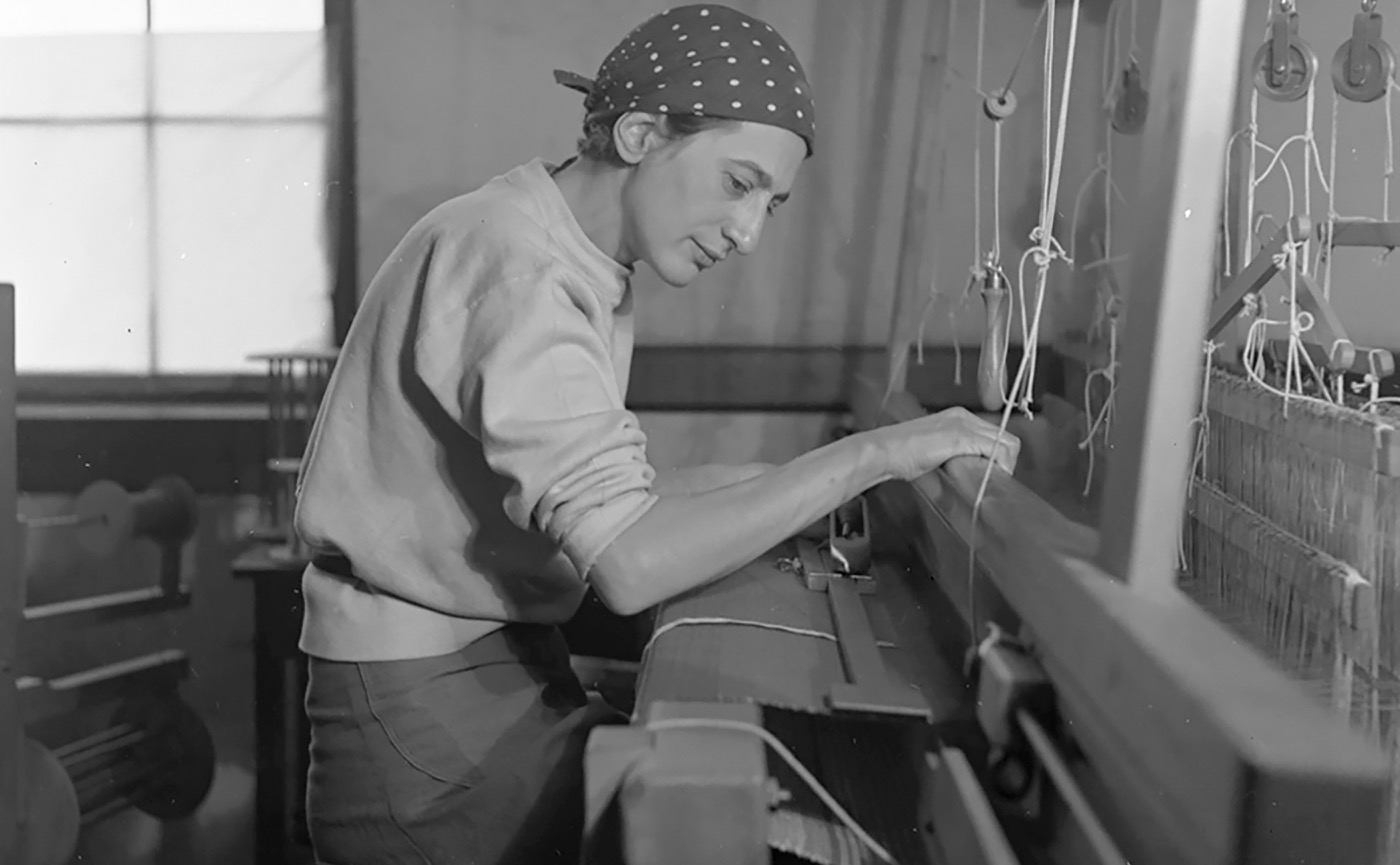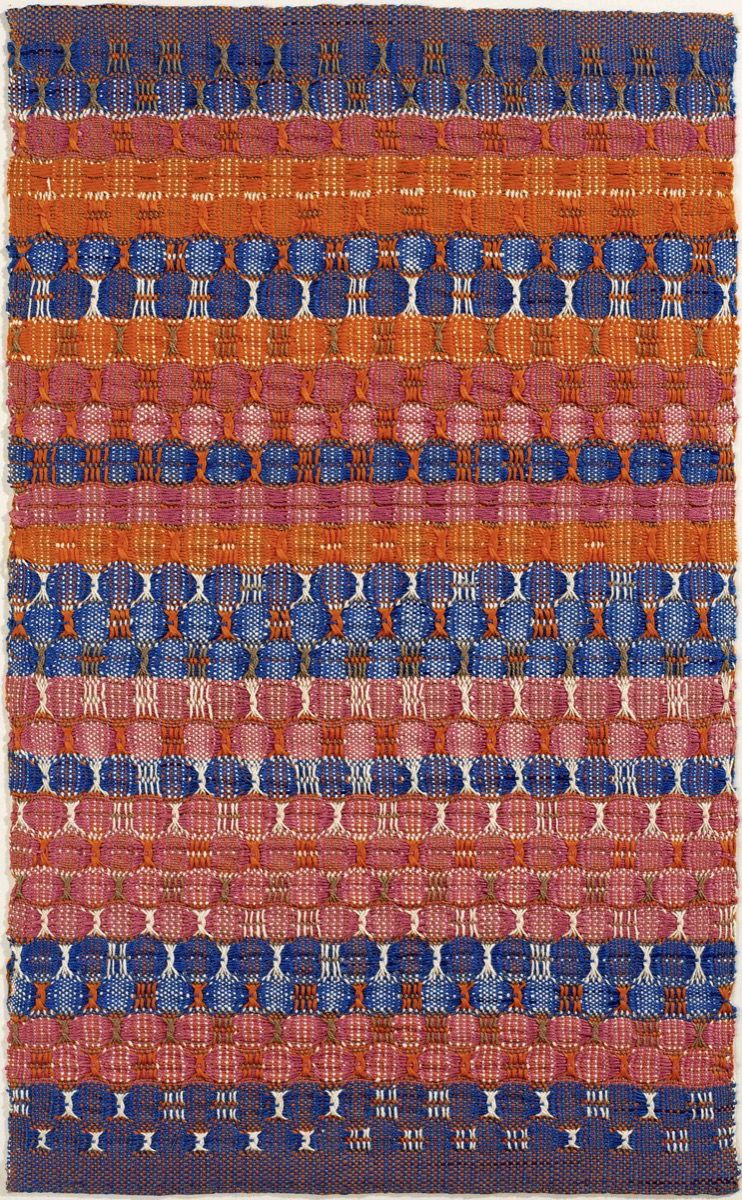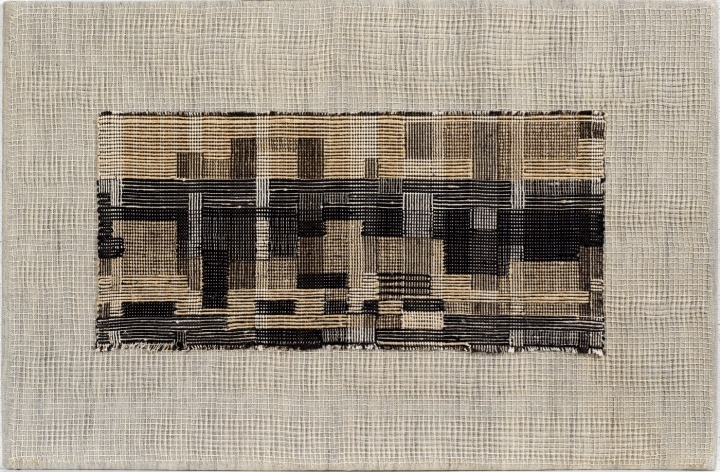01.ANNI ALBERS
The important word there is “sense.”
“We do not speak of designing a picture or a concerto, but of designing a house, a city, a bowl, a fabric. But surely these can all be, like a painting or music, works of art.” The words are those of Anni Albers, who spent a long and intimidatingly productive life attempting to prove exactly this assertion—that houses and cities, bowls and fabric, can be as much works of art as pictures or concertos, sculptures or frescoes. A half-century on, few people would claim that architecture doesn’t qualify, and thanks to Grayson Perry and Edmund de Waal, contemporary ceramics carry the gloss of art-world respectability.
In my case it was threads that caught me, really against my will. To work with threads seemed sissy to me. I wanted something to be conquered. But circumstances held me to threads and they won me over. I learned to listen to them and to speak their language. I learned the process of handling them.
And with the listening came gradually a longing for a freedom beyond their range and that led me to another medium, graphics. Threads were no longer as before three dimensional; only their resemblance appeared drawn or printed on paper.
ANNI ALBERS
On Weaving offers a model for how to write in a way that incorporates theoretical examination alongside practical content; in it Anni Albers provides valuable — and often overlooked — thoughts on art and creative work.
Anni Albers’s: Thoughts on Textiles Loom Large
ALBUQUERQUE — In her 1965 introductory note to On Weaving, Anni Albers explains that the book is “not a guide for weavers or would-be weavers,” and that she hopes to “include in my audience not only weavers but also those whose work in other fields encompasses textile problems.” What is a “textile problem”? The questions encountered in the study and Albers’s manipulation of textiles can inspire those working outside the medium — you do not need to work with the fiber arts in order to learn from them. Since its initial publication in 1965, Albers’s On Weaving has proved an important text for artists and scholars in architecture and design fields, as well as in arts education, but the book has yet to reach others who will find her textile-based investigations eloquent and challenging.
Anni Albers marked a momentous step for fibre arts when the former Bauhaus student became the first weaver to have a significant solo show at the Museum of Modern Art in 1949.
Artforms using textiles have existed for millennia but have not always been held in such high esteem in the art world. The artificial divide that exists between fine art and textiles (or applied/decorative arts, or craft) is a gendered issue. ‘Textiles have always suffered as an art media because of their association with domesticity and femininity,’ says Hannah Lamb of The 62 Group of Textile Artists, an artist-led pressure group that has been promoting textiles as a fine art for nearly 60 years. Historically, textiles have been labelled ‘women’s work’, and dismissed as inferior to pursuits such as painting and sculpture. But this has not always been the case.

